
This is an outstanding work of the great Botticelli was written to Lorenzo di Pierfrancesco de ‘Medici, cousin of Lorenzo the Magnificent.
Art historians disagree about the precise dating of the work. It is assumed that the picture was painted between 1477 and 1482 years.
Also of some complexity treatment of many allegorical symbols. According to the most common interpretation, the painting depicts the reign of Venus, sung by ancient poets and writer approached the court Medici Poliziano.
The picture is read from right to left: the winged god of wind Zephyr, in love with the nymph Chloris, catches up with her, to force to marry. Repented of their deeds, he turns it into Flora, the goddess of nature and spring. In the center the Venus symbolizes humanity, which reigns over the people. The group left – three dancing Graces. The scene concludes Mercury, scattering clouds of his magical wand.
Thus Venus, the embodiment of humanity, separates the carnal love and materialism from the love of the spiritual and moral values . Under the “humanity” I mean the ideal of the human person – benevolent, confident in their abilities and capabilities and to listen to the needs of others.
During the Renaissance, this ancient concept carefully studied philosophy and humanist Neoplatonic school at the court of the Medici. Neoplatonism, philosophical and aesthetic for, followed the theories of the Greek philosopher Plato. Neoplatonic concept of ideal beauty and the sublime “platonic” love had a profound influence on the culture and world figures of the Renaissance, including Botticelli.
Thus, the work also reflects the high intellectual level of the representatives of the Medici dynasty and their love for culture and art.
Botticelli painted with startling accuracy of colors and different kinds of herbs that can be found in the vicinity of Florence in the spring. A masterful use of colors, shapes sophistication connected internal movement, poetry composition makes this work fascinating and unique.
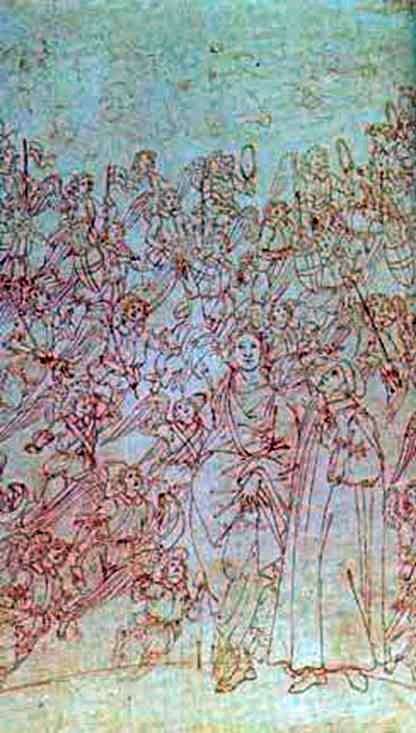 Dante and Beatrice, from the “Divine Comedy” by Sandro Botticelli
Dante and Beatrice, from the “Divine Comedy” by Sandro Botticelli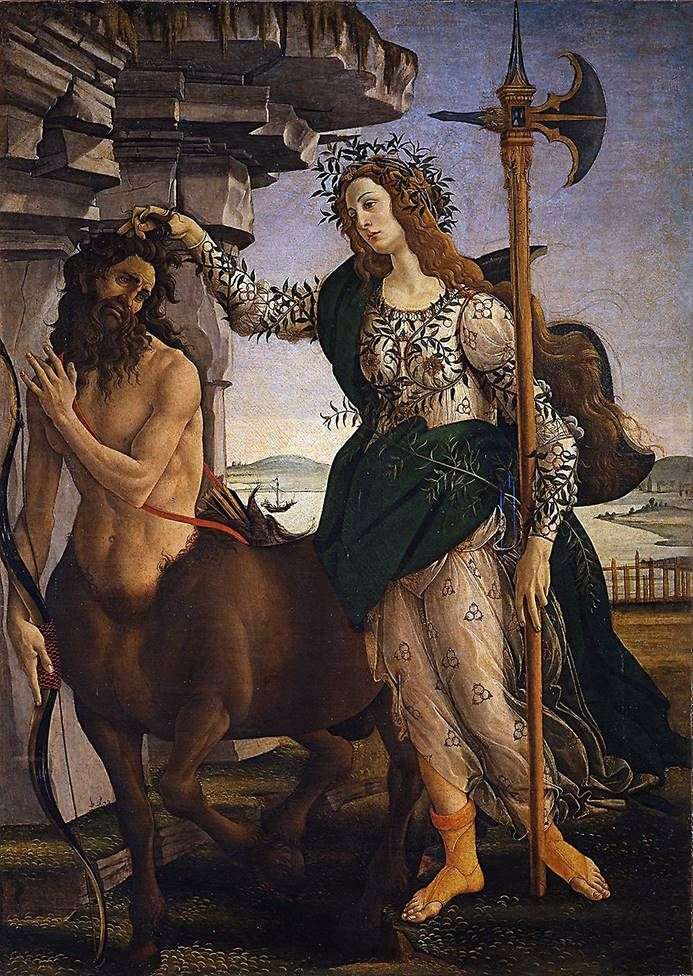 Athena Pallada and Centaur by Sandro Botticelli
Athena Pallada and Centaur by Sandro Botticelli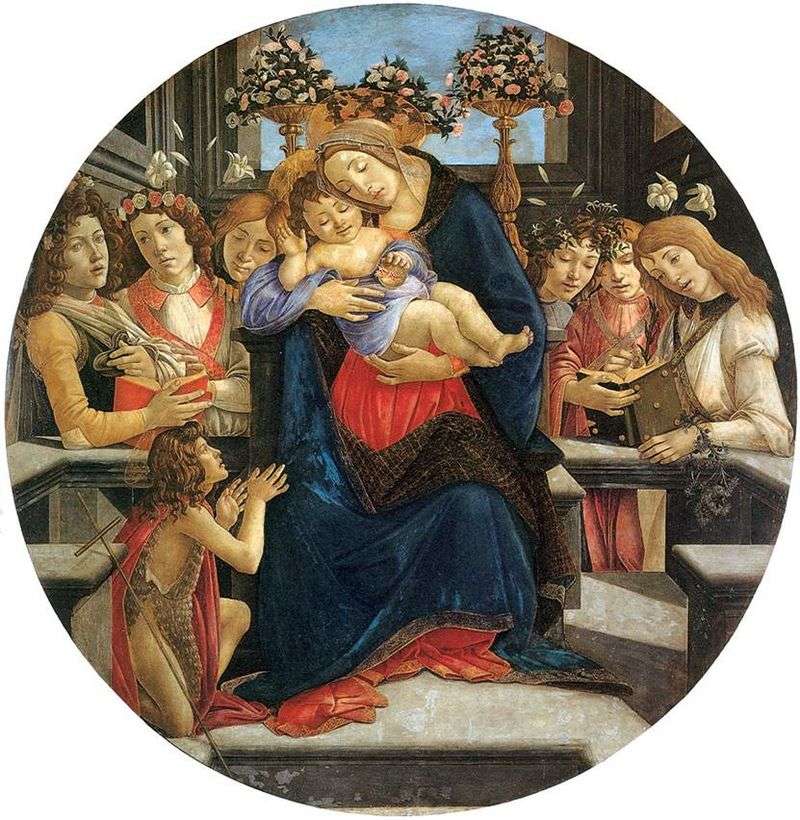 Madonna with Child, Angels and Saint John the Baptist by Sandro Botticelli
Madonna with Child, Angels and Saint John the Baptist by Sandro Botticelli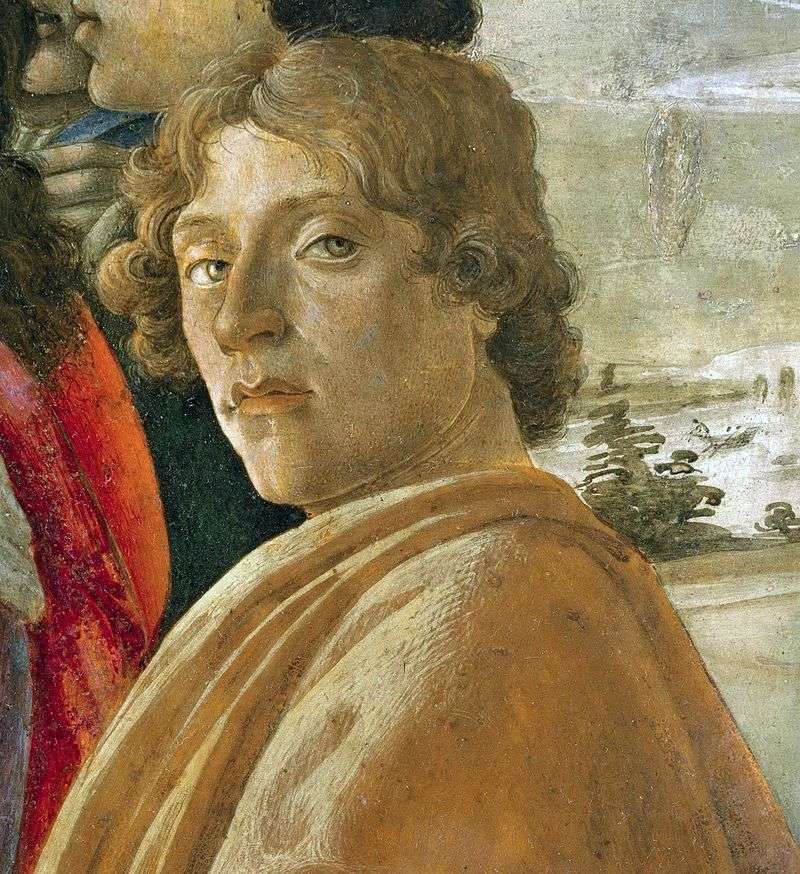 Self-portrait by Sandro Botticelli
Self-portrait by Sandro Botticelli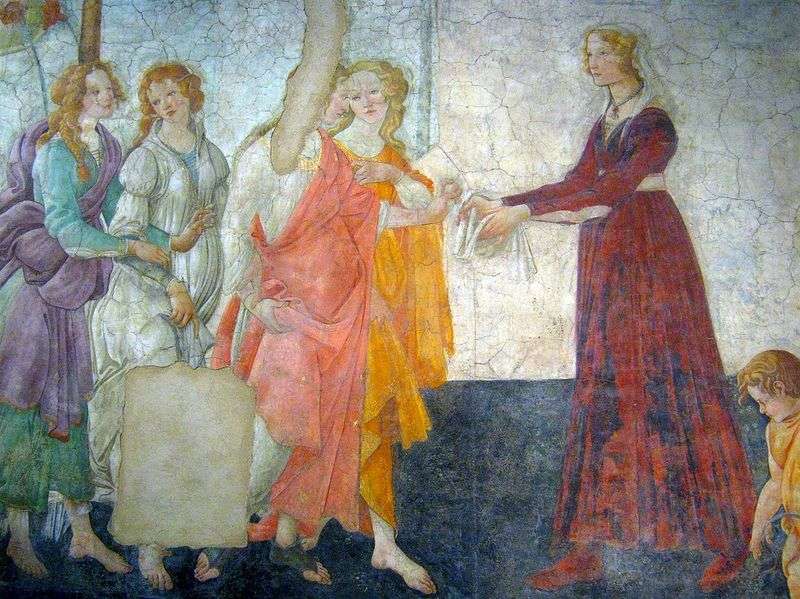 Venus and Three Graces give gifts to the girl by Sandro Botticelli
Venus and Three Graces give gifts to the girl by Sandro Botticelli Portrait of Giuliano Medici by Sandro Botticelli
Portrait of Giuliano Medici by Sandro Botticelli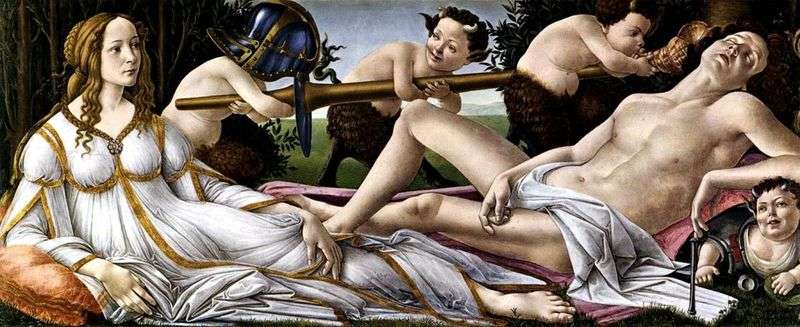 Venus and Mars by Sandro Botticelli
Venus and Mars by Sandro Botticelli The Birth of Venus by Sandro Botticelli
The Birth of Venus by Sandro Botticelli